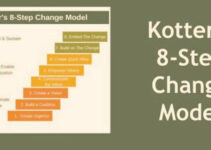Change management is the systematic and well-structured method and process of supporting and facilitating the smooth transformation from the current state to the desired state. It comprises dealing with the psychological and emotional state of being to decrease the disruption phase. However, the seven 7Rs provide you with an important checklist point while requesting for the change project. Today, we’ll discuss the 7Rs of change management; key elements, change types, and seven 7Rs of organizational change management.
Elements of Change Management
- Analyzing and evaluating the impact of the change project
- Envision the change project
- Connecting and engaging with stakeholders
- Effectively communicating
- Offering support and conducting training programs
- Dealing with resistance
Types of Change Management Initiatives
- Structural changes
- Technological changes
- Process change
- Cultural change
- Strategic change
- Merger and acquisitions
- Leadership change
Areas of Organizational Change Management
- Aligning leadership and bringing them onboard
- Connecting and engaging with stakeholders
- Communicating the change project
- Planning and performing impact analysis
- Conducting training programs and offering support
7Rs of Change Management
Let’s discuss the 7Rs of Change Management; they’re as follows;
Reason
First of all, you should exactly and precisely know the reason for the change project and why you need to implement changes in the organization. There could be a lot of reasons for the change project, or there could be only one reason for executing the change project. However, there are various external environmental factors impacting organizational changes like political, economic, social, technological, legal, and environmental. There are some visionary leaders in the organization and they want to implement changes.
It is significant to be aware of the reason for implementing the changes because it is the base and foundation of the change project. Without knowing the reasons and motives for the change project, it is highly difficult to successfully execute the change and achieve the desired results.
Risk
The change initiative always comes with multiple risk factors. It is necessary to observe and analyze everything involved in the project development process and the other relevant elements in the business have potential risks. However, the risk could range from ordinary to severe; for instance, the company may run out of business, lose some clients, or the data loss during the system upgrading process.
The question is how much risk you are willing to take to implement the organizational changes. In fact, it is necessary to know the presence of potential risks won’t jeopardize the company’s entire operations.
Resources
How many resources you are going to need to successfully execute the changes? While discussing the organizational change project, it is significant to keep in mind the availability of funding and resources that you would require to successfully execute the changes. You should make sure to have sufficient funding and resources while launching the changes. Otherwise, the change project would be floating in the air without delivering any tangible results.
Before measuring and evaluating the resources, you should make sure that you have the required resources for the change processes. You could analyze the search pool for the availability of resources; you’ll win if they’re present there.
Raised
You should know the person who initiated and floated the idea of the change project. Before you start working on the change management process, it is necessary to know the worth, value, and commitment of the person who suggested the change ideal to the attention of the board. Everyone wants to take credit for the success and no one wants to take responsibility once things could go wrong. The change initiating person should have solid proofs and reasons for the change project and they should present it to the board.
Return
It is significant to know the outcome of the change project if you implement the changes. For instance, you are working on a change project and you want to add new features to it. You should make sure that the return on investment should be sufficient to justify the change project in the first place. Otherwise, it doesn’t make any sense to take the risk of implementing the changes.
Responsible
It is important to know the person responsible for implementing, testing, and planning the changes. You should keep in mind one most important thing that you should choose the right person for the job who would take responsibility for evaluating, implementing, and proposing the changes that you demand. However, it could be from the senior management or project management that has the capability and expertise to successfully execute the changes.
Relationship
It is significant to know the relationship between the proposed changes and the other types of changes that you want to implement in the change process. You should determine the organizational changing tasks and processes, and they are greatly interdependent on one another.
Conclusion: 7Rs of Change Management | 7Rs of Organizational Change Management
After an in-depth study of the 7Rs of change management; we have realized that seven Rs offer you a great checklist for the change project. If you are learning about the seven Rs of organizational change management; then you should keep in mind the abovementioned types, elements, and seven Rs.
Ahsan is an accomplished researcher and has a deep insight in worldly life affairs. He goes Live 3 days a week on various social media platforms. Other than research writing, he’s a very interesting person.


